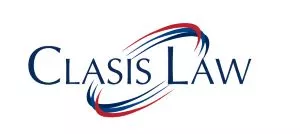- within Employment and HR, Consumer Protection, Government and Public Sector topic(s)
- with readers working within the Law Firm industries
The regulatory framework relating to core investment companies (CICs)1 is set out in Core Investment Companies (Reserve Bank) Directions, 2016. As per the extant regulatory framework, CICs having an asset size of (a) less than INR1 billion regardless of accessing public funds2 or not (b) with an asset size of INR 1 billion and above and not accessing public funds are not required to obtain a certificate of registration from the Reserve Bank of India (RBI).
On 3 July 2019, the RBI constituted a working group (WG) to review the regulatory guidelines and supervisory framework applicable to CICs. WG was assigned the responsibility of examining the current regulatory framework for CICs and suggesting changes therein, so as to strengthen the corporate governance framework and disclosure requirements for CICs.
Amendment in Regulatory Framework for CICs
In its report submitted by WG to the RBI in October 2019, the WG recommended several measures to strengthen the regulatory framework for CICs. Basis the recommendations of the WG and public comments, the RBI has by way of circular dated 13 August 2020 (Amended Guidelines)3 notified amendments in the regulations applicable to CICs. This article sets out, in brief, the key aspects of the Amended Guidelines:
(a) Adjusted Net Worth: As per the extant regulations, a systemically important CIC (i.e. a CIC having an asset size of INR 1 billion or above either individually or in aggregate along with other CICs in group and which raises or holds public funds) needs to ensure that the adjusted net worth of such CIC shall at no point of time be less than 30% of its aggregate risk weighted assets on the balance sheet and risk adjusted value of the off-balance sheet items as on the date of the last audited balance sheet as at the end of the financial year.
As per the Amended Guidelines, in case the amount representing any direct or indirect capital contribution made by one CIC in another CIC exceeds 10% of the owned funds4 of the investing CIC, then the amount equivalent to such excess shall be deducted while computing adjusted net worth of the investing CIC. This requirement shall, however, not be applicable till 31 March 2023 in respect of the investments by CICs in other CICs in excess of 10% of their owned funds as on the date of the Amended Guidelines.
(b) Simplification of Group Structure: In order to address the complexity in group structures and existence of multiple CICs within a group, the Amended Guidelines have restricted the number of permissible layers of CICs within a Group (including the parent CIC) to 2. This limit shall apply irrespective of the holding (direct or indirect)/control exercised by the investing CIC in another CIC. Any direct/indirect equity investment by a CIC in another CIC will be deemed as a layer for such investing CIC. The existing CICs have, however, been allowed a time period till 31 March 2023 to reorganize their business structure and adhere to this provision.
(c) Risk Management Committee: The Amended Guidelines require the parent CIC or the CIC with the largest asset size (if there is no identifiable parent CIC in the group) to establish a group risk management committee (GRMC). GRMC shall comprise a minimum of 5 members (including executive members) having adequate and commensurate experience in risk management practices. At least 2 of the members of GRMC must be independent directors, one of whom shall be the chairperson of the GMRC.
GRMC shall, among others, identify potential intra-group conflicts of interest, analyse the material risks, assess the corporate governance framework across the group, and carry out periodic independent formal review of the group structure. Based on the analysis and recommendations of GRMC, the CICs shall initiate corrective actions, if necessary.
A quarterly statement duly certified by the chief executive office/chief financial officer shall be submitted by the CIC to the board. Such quarterly statement shall indicate the deviation in the use of the proceeds received by the CIC from any creditor and/or investors from the objects/purposes stated in the relevant document (such as sanction letter or offer document) for such funding.
(d) Disclosure Requirements & Corporate Governance: The Amended Guidelines have set out the detailed disclosure requirements5 which shall be applicable to NBFCs-CIC. The disclosure requirements include maintaining a functional website containing basic information about the CIC and its group, disclosures about investment in other CICs, overseas assets, details of NPAs etc. CICs shall also disclose information relating to the name of the entity, type of business, loans & advances, total exposure of the CIC towards non-financial business, etc. with regard to group entities that are not consolidated in the financial statements of such CIC.
Every CIC shall need to adhere to corporate governance norms (such as audit committee, internal audit, and nomination and remuneration committee) as set out in the Companies Act, 2013 (CA 2013). Further, the Amended Guidelines have made it mandatory for CICs to have in place a policy with the approval of the board for ascertaining the 'fit and proper' status of directors. As per the Amended Guidelines, the 'fit and proper' criteria would be applicable not only at the time of appointment of directors but also on a continuous basis.
(e) Consolidation of Financial Statements: The Amended Guidelines require CICs to prepare consolidated financial statements as per provisions of CA 2013 so as to provide a clear view of the financials of the whole group. In case the entities meet the definition of group but are not covered under the consolidation requirements, disclosures shall be made in the indicative format set out in the Amended Guidelines.
(f) Investment in Money Market Instruments: As per the Amended Guidelines, the CICs can now invest in money market instruments, including mutual funds which invest in money market instruments/debt instruments with a maturity of upto 1 year.
Concluding remarks
The Amended Guidelines primarily focus on, among others, simplification of group structures, strict disclosure requirements, and enhanced corporate governance norms for CICs. In case of the large corporate groups having multiple layers, it is often very difficult to identify related party transactions and ascertain their ownership and control on account of the complex group structure. While the existing provisions of section 186 of the CA 2013 restrict the group structure to a maximum of 2 layers, this requirement is not applicable in case of the systematically important CICs (being categorized as NBFCs). The Amended Guidelines have restricted the group structure of CICs to 2 layers in line with the provisions of CA 2013.
Though in terms of section 186 of CA 2013, one layer which consists of one or more wholly-owned subsidiary or subsidiaries is not taken into account for the purpose of said restriction of 2 layers, the Amended Guidelines do not provide any such relaxations to CICs. Since the existing CICs are also required to comply with this requirement on or before 31 March 2023, this is likely to trigger an increase in restructuring transactions.
In addition to the above, the Amended Guidelines are likely to mitigate related risks for CICs as well as for their groups. The corporate governance norms and strict disclosure requirements would enhance the level of transparency which would, in turn, enable RBI to exercise better supervision and control over CICs.
Footnotes
1. A CIC is defined as a non-banking financial company carrying on the business of acquisition of shares and securities and which satisfies the following conditions as on the date of the last audited balance sheet:
(a) it holds not less than ninety (90) per cent of its net assets in the form of investment in equity shares, preference shares, bonds, debentures, debt or loans in group companies,
(b) its investments in the equity shares (including instruments compulsorily convertible into equity shares within a period not exceeding ten (10) years from the date of issue) in group companies and units of Infrastructure Investment Trust only as sponsor constitute not less than sixty (60) per cent of its net assets as mentioned in clause (a) above,
(c) it does not trade in its investments in shares, bonds, debentures, debt or loans in group companies except through block sale for the purpose of dilution or disinvestment, and
(d) it does not carry on any other financial activity other than (i) investment in bank deposits, money market instruments, including money market mutual funds and liquid funds, government securities and bond or debentures issued by group companies, (ii) granting loan to group companies, and (iii) issuing guarantees on behalf of group company.
2. "Public funds" includes funds raised either directly or indirectly through public deposits, inter-corporate deposits, bank finance and all funds received from outside sources such as funds raised by issue of commercial papers, debentures etc. but excludes funds raised by issue of instruments compulsorily convertible into equity shares within a period not exceeding 10 years from the date of issue.
3. The text of relevant circular can be accessed at the following link:
https://www.rbi.org.in/Scripts/NotificationUser.aspx?Id=11949&Mode=0
4. "owned funds" means paid up equity capital, preference shares which are compulsorily convertible into equity, free reserves, balance in share premium account and capital reserves representing surplus arising out of sale proceeds of asset, excluding reserves created by revaluation of asset, as reduced by accumulated loss balance, book value of intangible assets and deferred revenue expenditure, if any.
5. The detailed disclosure requirements can be accessed at the following link:
https://rbidocs.rbi.org.in/rdocs/content/pdfs/ADCCNRCIC13082020_A.pdf
The content of this article is intended to provide a general guide to the subject matter. Specialist advice should be sought about your specific circumstances.



